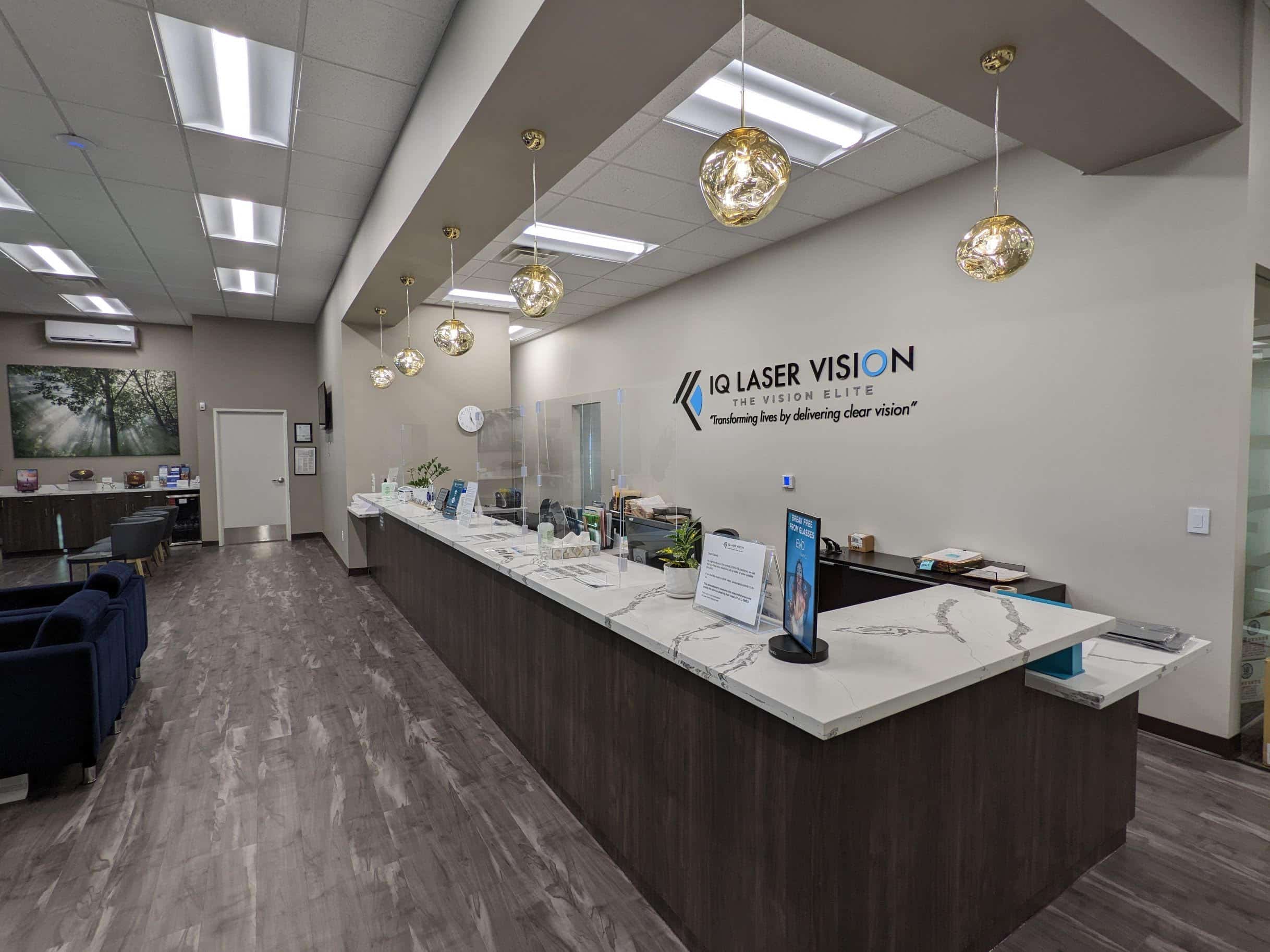Have you ever experienced the following due to long hours at the computer, or staring at your cell phone screen? Blurry, unfocused vision. Headaches. Dry eyes. Difficulty sleeping. Burning eyes. If you have, you’re not alone. Studies show that 64-90% of office workers experience the symptoms of eyestrain from Computer Vision Syndrome. Startlingly, an increasing number of children are also experiencing these effects due to increased use of electronic devices and their blue light emissions.

Blue light itself isn’t bad, and in its proper roles, makes the sky appear blue and regulates our natural sleep patterns. But up till now, we’ve been able to protect our eyes from UV and blue light by wearing sunglasses outdoors. Today, blue light has infiltrated nearly every moment of our days.
With greater dependence on electronics for work and play, eyestrain is becoming an increasing problem. A survey showed that people are spending more than 4 hours a day on their cell phones, sending texts, reading emails, watching videos, using social media and surfing the web. That’s not even counting the hours spent in front of the television, computer or tablet. And that time has steadily grown over the last several years. Ophthalmologists report a 50% increase in eyestrain from blue light emissions, pointing to computers, tablets and smartphones as the main culprits.
The high-energy of blue light and the rapidly blinking pixels of our device screens are harsh on the eyes. And that, along with dry eyes from decreased blinking, makes it difficult for the eyes to focus and see clearly. Instead, they’re forced to work extra hard to maintain a clear image. While there are no long-term study results yet that show a correlation to macular degeneration or eye diseases, it’s evident that blue light puts strain on the eyes. And that strain can lead to a variety of uncomfortable symptoms.
If you’re experiencing the effects of eyestrain from Computer Vision Syndrome, it’s time to take back control of your vision. Take these steps to protect your eyes against eyestrain and its associated symptoms.
Adjust your screen settings
Computer screens were not made with eye health in mind. But increased technology means increased ability to protect yourself against it. Chrome extensions like f.lux automatically adjust your screen’s settings based on time of day. As the sun sets, your computer background lighting dims to a warm glow, minimizing discomfort and eyestrain.
Wear computer glasses
Yellow-tinted computer glasses negate the blue light pouring into your eyes. They can be used without a prescription as a light shield. But if you do wear prescription glasses, you can talk to your eye doctor about applying an anti-reflective coating to them to protect your eyes from the glare of blue light and sunlight.
Take a break every 30 minutes
Give your eyes a break. Step away from the computer every 30 minutes or so, even for a short time. This will help your eyes stay relaxed, and your mind fresh—and encourage you to blink. Eye lubricating drops can also help add moisture back to your eyes as needed.
Remember the 20/20/20/2 Rule
Computer screens are major culprits in the growing problem of dry eyes and their associated symptoms. When staring at a screen for long periods of time, it’s easy to forget to blink. In fact, people tend to blink 66% less while at the computer. Prompt yourself to look away from your screen every 20 minutes for 20 seconds. Look at a point 20 feet away, and blink your eyes twice.
Use a blue light filter
Applying a filter to your devices’ screens is helpful to shield your eyes. Check out filters like Eyesafe (Health-E) and iLLumiShield.
Get LASIK
Glasses and contacts have been the traditional remedies for unfocused or blurry vision. But today, laser eye therapy, and its most popular form, LASIK, is more than trending. With blue light becoming an increasing part of modern life as we know it, laser procedures like LASIK are empowering people to correct their vision rather than simply masking a problem with prescription lenses.
Relax before bedtime
Natural blue light helps regulate the circadian rhythm of our natural sleep patterns. But when our patterns are disrupted by constant streams of blue light, the brain stops producing melatonin and makes a restful night’s sleep nearly impossible. Shut down your digital devices 1-2 hours before bedtime to give the mind time to power down and relax, and regain its natural rhythm.
Eyestrain is a very real and growing problem of the modern, tech age. But you don’t have to be a victim. By implementing these tips, you can begin to create a strategy to combat eyestrain and save your vision.























